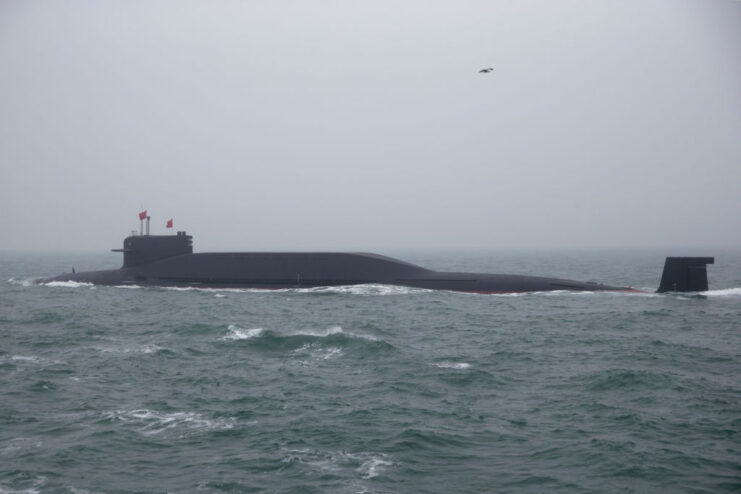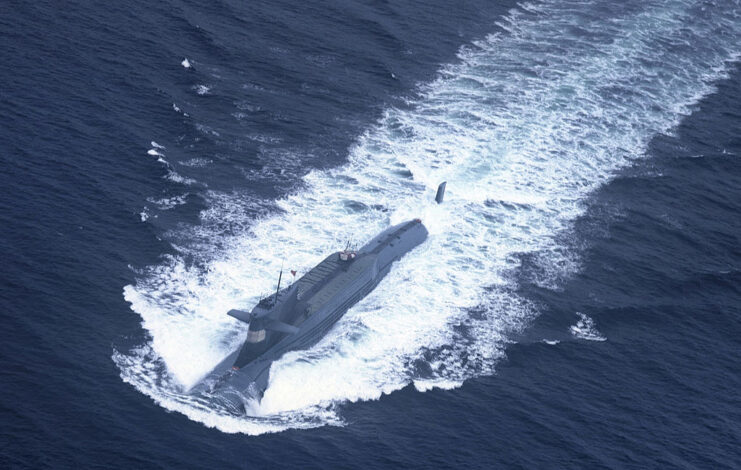China’s Newest Nuclear Submarine Sank Earlier This Year, US Officials Confirm
China’s People’s Liberation Army Navy (PLAN) suffered a major blow earlier this year when its newest nuclear-powered attack submarine sank pier-side. News of the sinking, which occurred in spring 2024, was confirmed by senior US defense officials to The Wall Street Journal.
Senior U.S. Officials have now revealed that the Chinese Navy’s Newest Nuclear-Powered Attack Submarine, dubbed the Zhou-Class, suffered a Major Technical Malfunction in May or June while Pier-Side at a Shipyard in Wuhan, leading it to Sink into the Yangtze River; something which… pic.twitter.com/b068J0jNor
— OSINTdefender (@sentdefender) September 26, 2024
Intended to be the first in China’s newer Zhou class, the vessel was under construction at a shipyard in Wuhan when the incident occurred. Identifiable by the class’ X-shaped stern, which is said to help maneuverability, a satellite image dated March 10, 2024, shows the submarine at port.
That June, images reviewed by CNN show her absent from the pier. A few months later, on August 25, a submarine was seen at the same dock, but it’s unclear if it was the same one that sank.
China hasn’t confirmed the incident, with an embassy spokesperson in Washington, DC, telling the media, “We are not familiar with the situation you mentioned and currently have no information to provide.”

According to CNN, Thomas “Tom” Shugart, an adjunct senior fellow at the Center for a New American Security and a former US Navy submarine officer, was the first to take notice of unusual activity at the shipyard, noting that cranes had been “clustered” at a spot where there’d traditionally only been one.
“Usually, those submarines, after they get launched, they’re there at the shipyard for several months in outfitting,” Shugart told the publication. “And it wasn’t there anymore.”
He added in an interview with The Wall Street Journal that it’ll likely take months for the vessel be out at sea, saying, “The whole boat would be full of water. You’d have to clean out all the electronics. The electric motors may need to be replaced. It would be a lot of work.”
More images of the Chinese Navy’s Newest Nuclear-Powered Attack Submarine (Zhou-Class, Type 041), That Sank at a Shipyard in Wuhan
US officials are unsure if the sub contained nuclear fuel at the time of the sinking, but it’s highly likely.
The submarine was eventually salvaged… pic.twitter.com/C0pfkTWdQD
— Indo-Pacific News – Geo-Politics & Defense (@IndoPac_Info) September 27, 2024
The Wall Street Journal reports that the submarine was seen at a pier on the Yangtze River in late May, where it was undergoing final equipping before heading out to sea. By early June, however, the aforementioned cluster of cranes Shugart saw appeared, to remove the vessel from the riverbed.
“It’s not surprising that the PLA Navy would try to conceal the fact that their new first-in-class nuclear-powered attack submarine sank pierside,” a US defense official told the publication. “In addition to the obvious questions about training standards and equipment quality, the incident raises deeper questions about the PLA’s internal accountability and oversight of China’s defense industry, which has long been plagued by corruption.
“It’s not surprising that the PLA Navy would try to conceal it,” they added.

More from us: The Vietnam War’s Heroic ‘Dustoff’ MEDEVAC Crews to Receive Congressional Gold Medal
Are you a fan of all things ships and submarines? If so, subscribe to our Daily Warships newsletter!
According to US officials, there’s no indication the Chinese have sampled the Yangtze River for radiation. It’s also unknown if there was a reactor or nuclear fuel onboard the submarine at the time of the incident. They also state it’s likely personnel were injured or killed in the sinking, but note that they don’t know if any causalities were suffered.
The post China’s Newest Nuclear Submarine Sank Earlier This Year, US Officials Confirm appeared first on warhistoryonline.
China’s Newest Nuclear Submarine Sank Earlier This Year, US Officials Confirm
Philippines Truth
Post a Comment
0 Comments